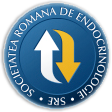
- Login
- Register
- Home/Current Issue
- About the journal
- Editorial board
- Online submission
- Instructions for authors
- Subscriptions
- Foundation Acta Endocrinologica
- Archive
- Contact
 Romanian Academy
Romanian Academy
 The Publishing House of the Romanian Academy
The Publishing House of the Romanian Academy

ACTA ENDOCRINOLOGICA (BUC)
The International Journal of Romanian Society of Endocrinology / Registered in 1938in Web of Science Master Journal List
Acta Endocrinologica(Bucharest) is live in PubMed Central
Journal Impact Factor - click here.

-
Endocrine Care
Onder CE, Kuskonmaz SM, Koc G, Firat S, Omma T, Taskaldiran I, Gokbulut P, Culha C
Factors that Affect the Glycemic Control Achieved by Switching to Insulin Degludec/ Aspart in Insulin-Treated Patients with Type 1 and Type 2 Diabetes in a Real-World Setting: a Non-Interventional, Retrospective Cohort StudyActa Endo (Buc) 2020 16(4): 443-448 doi: 10.4183/aeb.2020.443
AbstractBackground. Insulin degludec/aspart (IDegAsp) is a co-formulation with IDeg and IAsp. Different insulin regimens may be switched to IDegAsp. In this study, we aimed to find out the effect of switch to IDegAsp on glycemic control and whether the basal characteristics and treatment modalities of the patients affect the change in glycemic control brought by switch to IDegAsp. Methods. We retrospectively analyzed the records of 78 patients whose insulin therapies (basal+bolus, premixed analogues or basal only) were switched on a 1:1 unit basis to IDegAsp±bolus insulin. Oral antidiabetic agents (OADs) given were recorded. At the end of 12th and 24th week, total insulin doses of patients and HbA1c were compared to the baseline. Results. There was a statistically significant decrease at HbA1c at 12 weeks (1.4%; p<0.001). There was not a significant difference in HbA1c between the OAD added group and the group with no new OADs(p=0.1). Basal insulin dose was not statistically different from baseline, whereas bolus insulin dose was significantly lower (p=0.007). At the end of 24 weeks the decrease in HbA1c level from baseline was preserved. Conclusion. Regardless of the baseline insulin regimen, diabetes type and oral antidiabetic drugs given, HbA1c is significantly lowered after switching to IDegAsp. -
Endocrine Care
Zosin I, Balas M, Golu I, Vonica O, Badescu L, Ursoniu S
Diagnostic approaches in a series of cases with Graves' ophthalmopathyActa Endo (Buc) 2010 6(4): 455-464 doi: 10.4183/aeb.2010.455
AbstractIntroduction. The definition of severity and activity of Graves' ophthalmopathy (GO)comprises different parameters.\r\nThe aim of this study is to select the most appropriate severity and activity criteria, respectively scores and to investigate a possible correlation among them.\r\nSubjects and methods. The study included 51 patients with GO (43 females, 8 males), mean age 46.8?11.2 years. The patients were evaluated by: clinical exam, laboratory\r\nparameters (TSH, FT4, FT3, thyroid autoantibodies) and imagistic means, performed in selected cases (CT or MRI).\r\nResults. The GO activity was assessed by the clinical activity score (CAS). We quantified the EUGOGO severity criteria, by allotting points for each selected parameter.\r\nAccording to the recommended criteria, the cases were divided into active (n=26) and inactive forms (n=25). There were no significant statistical differences regarding CAS\r\nbetween euthyroid cases (n=14) and dysthyroid cases (n=37). Serum thyroid receptor antibodies (TRAb) levels did not correlate with CAS or severity scores. Severity scores\r\ncorrelated significantly with CAS (Pearson correlation index 0.546, r2=0.290, p=0.0001).\r\nConclusion. Active forms of GO showed higher severity scores than the inactive ones. The severity scores correlated significantly with CAS scores. Neither CAS, nor severity scores correlated significantly with the severity of thyrotoxicosis. -
General Endocrinology
Rao Z, Zhang Y, Luo C, Zhu C
Exploring the Link between Systemic Immunity-Inflammation Index and Obesity in the US Population: Nhanes Study Insights (2005–2020)Acta Endo (Buc) 2024 20(4): 455-464 doi: 10.4183/aeb.2024.455
AbstractObjective. To explore the correlation between the systemic immunity-inflammation index (SII) and obesity, utilizing data from the National Health and Nutrition Examination Survey (NHANES) from 2005 to 2020. Methods. This cross-sectional study included 137,888 adult participants with complete data on SII and obesity. SII was calculated using the formula: platelet count multiplied by the neutrophil count divided by the lymphocyte count. Obesity was defined as a body mass index (BMI) exceeding 30 kg/m2. Results. Multivariate linear regression analysis showed a significant positive correlation between SII and obesity (β = 0.19, 95% CI: 0.18, 0.20). Factors such as age, sex, education level, and smoking status significantly influenced this correlation. However, race, income-topoverty ratio, hypertension, and diabetes did not significantly interact with the observed relationship (interaction p-value > 0.05). Conclusion. The study highlights a substantial link between elevated SII levels and the prevalence of obesity, indicating the potential of SII as a biomarker in obesity research. Further large-scale prospective studies are needed to better understand the role of SII in the pathophysiology of obesity. -
Endocrine Care
Radenkovic S, Velojic Golubovic M, Dimic D, Radojkovic DB, Ciric V, Gluvic Z, Bjekic-Macut J, Markovic A, Radic L , Pesic M
The Effect of Therapy with Insulin Analogues (Aspart and Glargine) on Oxidative Stress Parameters in Patients with Type 1 Diabetes MellitusActa Endo (Buc) 2023 19(4): 463-470 doi: 10.4183/aeb.2023.463
AbstractContext. There are evidences that excessive production of reactive oxygen species is one of important abnormalities that contribute to development of chronic diabetic complications. Objective. To test the effect of intensive insulin therapy with analogues through the examining the level of oxidative stress parameters. Subjects and Methods. Comparison of data obtained by prospective analysis in 49 patients with T1DM was used, before and after six months of intensive insulin analog therapy. Results. The values of all three investigated parameters of oxidative stress malondialdehyde (MDA); xanthine oxidase (XO) and nitrates and nitrites (NOx) in our population with T1DM compared to the control (group of 42 voluntary blood donors) are statistically higher. The levels of antioxidant protection parameters compared to the control group also differ; the activities of catalase and glutathione peroxidase (GPx) are statistically higher in our population of T1DM patients compared to the control and superoxide dismutase (SOD) activities are statistically lower. The values of all three examined parameters of oxidative stress decrease after six months of intensive insulin analog therapy and were statistically lower after the therapy: for MDA p<0.001, for XO p<0.01 and for NOx p<0.05. The activities of catalase (p<0.001) and GPx (p<0.01) both decrease with therapy, while the activity of SOD is highest after the sixth month of therapy (p<0.001). Conclusion. In our patients with T1DM compared to the control the level of oxidative stress is significantly higher. Intensive insulin analog therapy with aspart and glargine promotes predominantly the improvement of oxidative stress, and in a less degree antioxidant protection. -
General Endocrinology
Yarar Z, Caliskan Burgucu H, Can M, Kocabas M, Karakose M, Kulaksizoglu M , Karakurt F
Thyroid Nodule Frequency and Malignancy Risk According To ATA- 2015 and ACR-TI-RADS Classification in Obese PatientsActa Endo (Buc) 2024 20(4): 465-470 doi: 10.4183/aeb.2024.465
AbstractObjective. In our study, we aimed to evaluate thyroid nodule ultrasound findings, nodule frequency and malignancy risk according to the ultrasonographic classification systems [(American Thyroid Association-2015 (ATA) and American College of Radiology - Thyroid Imaging Reporting and Data System (ACR-TIRADS)] in obese and non-obese subjects. Materials and methods. 111 obese subjects and 111 non-obese age- and sex-matched control subjects were included in the study. The malignancy risk of the identified nodules was evaluated using ultrasonographic classification systems. Fine needle aspiration biopsy (FNAB) was performed on the nodules according to ultrasonographic malignancy risk, and cytopathological evaluation was performed according to the Bethesda system. Results. We did not find any difference between the groups in terms of age, sex, thyroid stimulating hormone (TSH) levels and thyroid volumes. We detected thyroid nodules in 36 (32.4%) of 111 subjects in the obese group and 22 (19.8%) of 111 subjects in the control group. Compared with controls, the prevalence of nodules was higher in obese subjects (p=0.046). There was no difference in the malignancy risk of nodules in obese subjects compared to non-obese subjects according to both ultrasonographic classification systems. Conclusion. We have determined that the frequency of thyroid nodules is higher in obese patients than in nonobese subjects. However, we did not find any difference between the two groups in terms of malignancy risk of thyroid nodules according to ultrasonographic classification systems. -
Case Report
Kaya A, Cakir M., Turan E., Kulaksizoglu M., Tastekin G., Altinok T
Normocortisolemia after Ten Days Octreotide Treatment in a Patient with Ectopic Cushing's Syndrome Due to Bronchial CarcinoidActa Endo (Buc) 2013 9(3): 467-472 doi: 10.4183/aeb.2013.467
AbstractContext. We report the use of subcutaneous somatostatin injection three times a day to decrease hypercortisolism in a patient who had Cushing’s syndrome induced by bronchial carcinoid tumour progressive pneumonia due to immune suppression. Subject and Method. A 46-yearold man with 7-month history of DM type-2, hypertension and cerebrovasculardisease, vertebral compression-fracture was admitted to our clinic. Physical examination was consistent with Cushing’s syndrome. Laboratory results revealed hyperglycemia (143 mg/dL; reference range, <100 mg/dL) and hypokalemia (2.29 mEq/L; reference range, 3.5-5.1 mEq/L). His morning serum cortisol was 40 μg/dL (reference range 6.7- 22.6 μg/dL), urine cortisol-excretion was 2245 μg/24 hours (reference range 58-403 μg/24 hours), after 1 mg dexamethasonesuppression test serum cortisol was 28 μg/dL (6.7-22.6 μg/dL) and ACTH 354 pg/mL (reference range 7.9-66 pg/mL). Adrenal CT and hypophyseal MRI were normal. An ectopic source was searched for Cushing’s syndrome. Chest CT scan of the right lung showed 12x9 mm nodule. High fever cough occurred on the followp. Chest radiograph revealed diffuse pneumonic infiltration. Despite 3-drug antibiotic combination therapy, infection did not improve. Subcutaneous injection of octreotide 3x100 μ/g was initiated to decrease hypercortisolism. The infection improved rapidly after the therapy. The morning serum cortisol, urine cortisol-excretion, ACTH was at the upper normal range (77.1 pg/mL, reference range 7.9-66 pg/mL) on 10th day of treatment. The patient was a consulted for surgery and the nodule was excised. The pathology was consistent carcinoid tumor. Conclusion. Subcutaneous octreotide treatment may be helpful to gain time for exploring the focus in ectopic cushing’s syndrome and to control the serious infections due to hypercortisolism. -
Endocrine Care
Kucukdag M, Yektas C, Tufan AE, Arslanoglu I
Evaluation of Emotion Regulation Skills, Quality of Life, Coping Styles, Anxiety, Depression and Eating Habits in Children with Type 1 Diabetes Mellitus and Their MothersActa Endo (Buc) 2024 20(4): 477-484 doi: 10.4183/aeb.2024.477
AbstractAim. We aimed to determine styles of coping with stress, emotion regulation skills, eating attitudes and quality of life in children with DM type-1 and comparison of findings with healthy children. In addition, it was aimed to investigate the relationship between these findings and the presence of psychopathology, emotion regulation skills and styles of coping with stress in their mothers. Method. The study included 70 diabetic,70 healthy children and their mothers. During the evaluation, the Children’s Depression Inventory, the Screen for Children Anxiety Related Disorders (SCARED), the Difficulties in Emotion Regulation Scale (DERS), the Eating Attitudes Test (EAT), the Pediatric Quality of Life Inventory (PedsQL) and Ways of Coping Inventory (COPE) were applied to all children. In addition, DERS, COPE, Beck depression and Beck anxiety scales were applied to all mothers. Results. It was found significantly more problems in diabetic group in the DERS-impulse subscale, COPEhelplessness, PedsQL-physical subgroup, EAT, SCARED scores experienced than the control group. In the scales applied to mothers of diabetic children, significantly higher scores were found in the DERS-nonacceptance subscale, deficits in emotional clarity subscale and impulse subscale, COPE-helplessness subgroup, and Beck Depression Scale. Conclusions. DM creates problems in patients' and mothers' emotional regulation skills and coping styles with stress; it also negatively affects the quality of life and eating attitudes of children. -
Endocrine Care
Mitrovic B, Gluvic Z, Klisic A, Obradovic M, Macut D, Tomasevic R, Isenovic ER
A Non-Invasive Method for Estimating the Severity of Liver Steatosis and the Risk of Fibrosis in Non-Obese Type 2 Diabetes Patients with NAFLDActa Endo (Buc) 2022 18(4): 480-487 doi: 10.4183/aeb.2022.480
AbstractContext. Prognostic considerations include assessing the risk of liver fibrosis in people with nonalcoholic fatty liver disease (NAFLD). Objectives. This study evaluates the use of hematologic and metabolic parameters regarding liver steatosis and fibrosis scores (FLI and Fib-4) in non-obese type 2 diabetes mellitus (t2DM) patients with NAFLD. Methods. Subjects underwent abdominal ultrasound examinations, and FLI and Fib-4 scores were calculated to evaluate liver steatosis and the risk of liver fibrosis non-invasively: 61 non-obese NAFLD subjects with t2DM were included in the cohort study and were divided into 2 groups depending on the t2DM treatment regimen. Results. Fib-4 and WBC count demonstrated a significant inverse correlation (OR = 0.509, p = 0.007). WBC count had an R2 of 0.237, indicating that this marker could account for up to 23.7% of a variation in Fib-4. Fib- 4 and FFA had positive correlation which did not achieve statistically significant prediction (OR=7.122, p=0.062). Additionally, a significant prediction of HbA1c (OR=1.536, p=0.016) and haemoglobin (OR=1.071, p=0.020) for FLI was revealed. Conclusion. HbA1c and other haematological and metabolic parameters, such as haemoglobin and WBC, may be another non-invasive tool for determining whether nonobese NAFLD patients with t2DM are at risk of developing liver steatosis and fibrosis. -
Endocrine Care
Aysan E, Korkmaz YY, Hacihasanoglu E
A New Method for Intraoperative Definitive Diagnosis of Inadvertent Parathyroidectomy During Central Neck DissectionActa Endo (Buc) 2024 20(4): 490-493 doi: 10.4183/aeb.2024.490
AbstractBackground. The most serious complication of central neck dissection (CND) is inadvertent parathyroidectomy. There is no definitive method for intraoperative diagnosis of this complication. Method. We studied on CND indicated 17 thyroid cancer patients (14 female, 3 male, age range: 21-67, mean age: 43.4). The excised CND material was kept in 50 ml of normal saline for 30 minutes. A 2 ml sample was taken from this fluid and sent to biochemistry for rapid parathyroid hormone (PTH) measurement. Results. PTH values were <10pg/mL in 14 patients. PTH values of three patients were very high (112pg/mL, 167pg/mL, 210pg/mL respectively). When the excised tissue in these patients was evaluated intraoperatively with loop glasses, one parathyroid tissue was found in each of the three cases and these were auto-transplanted intramuscularly. After this procedure we kept CND tissue material again in another normal saline of 50mL in 30 minutes and PTH was measured. The values came back as <10pg/mL. No parathyroid gland was found in any case in the postoperative routine histopathological evaluation. No patient had symptoms of hypocalcemia during the eightweeks postoperative follow-up. Conclusion. Inadvertent parathyroidectomy due to CND is a serious complication. This complication can be prevented with the simple method we recommend here. -
Endocrine Care
Caglar E, Ugurlu S, Zuhur SS, Yetkin D, Kadioglu P
Disease Control Using Various Treatment Modalities in AcromegalyActa Endo (Buc) 2011 7(4): 491-502 doi: 10.4183/aeb.2011.491
AbstractAim. This study aimed to investigate the clinical presentation and treatment outcomes of newly diagnosed acromegaly patients treated with various combinations\r\nof treatment modalities.\r\nMaterials and Methods. Eighty-four acromegaly patients (42 female, 42 male, mean age 40.29?13.32 y), followed and\r\ntreated between 2000 and 2010 were included. Data on patient demographics, delay between onset of symptoms and the\r\ndiagnosis, details of treatments, and treatment- or disease-related morbidity and mortality were collected and analyzed. The median delay time for diagnosis was 60.71 ? 56.19 months. Patients received various combinations of surgery, gamma knife radiotherapy or conventional radiotherapy,\r\nlong acting somatostatin analogue, and dopamine agonist.\r\nResults. After ten years of treatment, median GH and IGF-1 values decreased from 13.7 ng/mL (IQR: 5.3- 34) to 1.04\r\nng/mL (IQR: 0.52-2.7) and from 600 μg/L (IQR: 460.5-787.5) to 194 μg/L (IQR :157-356), respectively (p<0.0001).\r\nMedian GH during 75 g oral glucose tolerance test (OGTT) decreased from 4.35 ng/mL (IQR: 1.87-13.15) to 1.40 ng/mL\r\n(IQR: 0.60-3.40) (p<0.0001). Fifty patients (59.5%) were in remission according to IGF-1 values and 52 patients (62 %) were cured according to nadir GH during OGTT respectively. The mortality rate was 5.9%.\r\nIn conclusion. Strict biochemical control following appropriate intervention significantly reduces both morbidity and mortality in acromegaly patients.